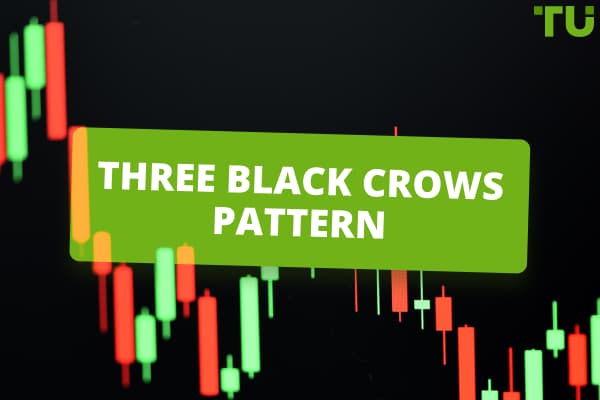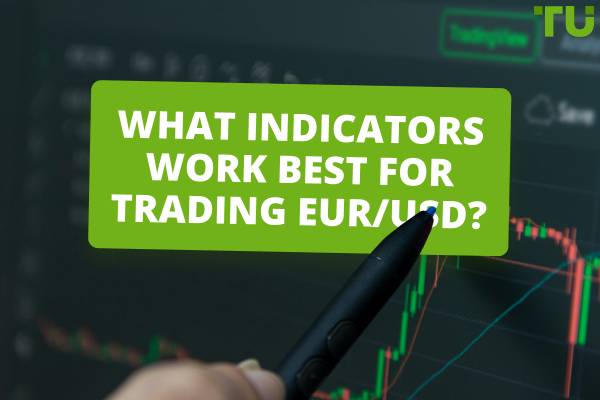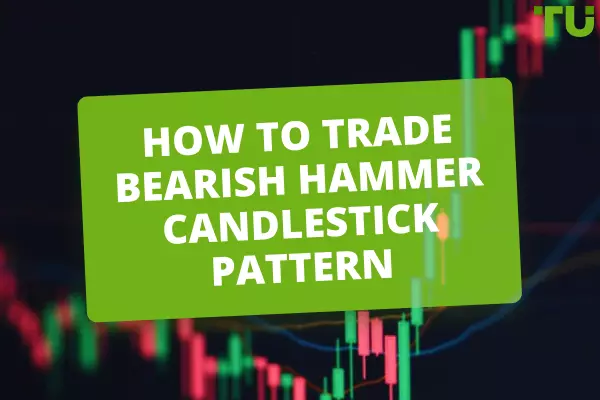How To Day Trade With $500?
To begin day trading with $500, focus on education, start small, use low-cost platforms, and practice disciplined risk management.
Day trading is becoming increasingly popular, and beginners should start with lower stakes. You must open an account with a reputable broker and fund it before you can engage in any form of trading. You can start with small sums because many trading platforms do not have a specified minimum deposit requirement.
This article covers crucial points to consider before starting your day-trading journey and how to prevent beginner errors.
Can I day trade with $500?
Day trading with $500 is difficult, but it is doable with the right strategy. This post will examine useful tactics and crucial procedures for navigating the day trading market with a $500 starting capital. We'll go through how essential it is to get a strong education in trading methods and analysis, how to pick cheap trading platforms, and how to start small positions to reduce risk. This post will offer helpful tips to get you started and lay a foundation for your day trading journey, whether you're a novice trying to get started or an experienced trader looking to optimize your methods with a modest account.
However, in most nations and marketplaces, including Forex and cryptocurrency, you can day trade with $500. The starting steps are briefly listed below:
Learning the Fundamentals
Being a day trader requires vast expertise like any other type of financial employment. Learn the fundamentals of market theory, trading methods, and supporting technical abilities before choosing stocks.
Use simulations to practice
It helps to practice the fundamentals of trading first on a simulation before moving on to the real thing and risking your limited funds. Learning how to trade differs from using your knowledge and gaining experience. Make errors in a secure environment. Why not learn the "hard lessons" without suffering a financial loss? You can achieve this by using dummy accounts for trading simulations.
Choose a Broker for Small Accounts
Find a broker that accepts $500 as the minimum initial deposit and doesn't charge extra day trading costs if you have only $500. For instance, Charles Schwab and TD Ameritrade offer active traders fantastic software packages and free commissions. Day traders who have little money in their accounts typically face different rules. For instance, the pattern day trader (PDT) rule in the United States limits you to just three-day trades for five consecutive days if you have less than $25,000.
Select the Proper Assets
Various assets can be traded, including commodities, stocks, money, cryptocurrencies, and more. Even though some individuals choose stocks, they aren't necessarily the greatest to begin day trading. For instance, compared to stocks, futures have several advantages. Since you may nearly always trade them without interruption, they give beginning-day traders flexibility.
Have an appropriate strategy
You must select a strategy that accommodates your low investment amount of $500. Consider the following when you develop your plan:
• When to trade and how much money to put in;
• When you enter the market;
• When you sell a position;
• How you plan to handle risks.
Top tips to start day trading with $500
It's time to begin practicing, organizing, and building a trading strategy once you've decided what you'll be trading and set up all of your necessary equipment. Here are a few pointers to get you started and help you control the risk associated with day trading.
Start small
Start day trading with lesser sums of money you can afford to lose when you first begin. You can start with $500 or $1000, entering depends on the styles of trading you chose to pursue. Start with a small amount to keep yourself on the safe side.
Many day traders lose money when they first start. If you notice money you can't afford to lose disappearing, it can also be unpleasant and negatively influence your choices.
Employ limit orders
You can establish a specific price for purchasing or selling using a limit order. A limit order to buy will be carried out at the limit price or less to ensure you don't overpay. To prevent a significant loss, a limit order to sell will be carried out at the limit price or higher.
By using your brokerage, you set up the order. The deal is automatically carried out when the stock hits the specified price. This can prevent you from suffering significant losses.
Keep your emotions in check
When you are day trading, it might be simple to become emotional and respond carelessly to positive or negative news. However, doing so might result in making poor choices. Instead, whether selecting whether to buy or sell, stick to your plan. In day trading, rational decisions are more profitable than irrational ones.
Timing your trades right
You are not required to trade continuously as a day trader. Limiting trading to two to three hours per day will give you greater consistency. Depending on your trading, you must decide which hours to concentrate on.
The first one to two hours after the market is opened and an hour before it is closing is ideal for day trading equities.
Start around opening hours
During the week, the currency market is open 24 hours daily for trading. The most common day trading pair is EUR/USD.
Develop your strategy
Use a demo or a practice account to test your trading approach regardless of your market. This enables you to continue practicing throughout the day, even when the market is closed. Since there are no two identical trading days, it requires skill to recognize trade setups and execute deals without hesitation before switching to live trading, practice for at least three months, and reach the point where you can consistently turn a profit.
What is the pattern day trading rule?
A pattern day trader (PDT) is a regulatory term for traders or investors that use a margin account to conduct four or more day transactions over five working days. The total number of day trades in the margin account over that five-business-day period must be greater than 6%.
The Financial Industry Regulatory Authority (FINRA) determines the PDT classification, which differs from a typical day trader regarding the volume of day transactions executed in a certain period. A pattern day trader should always have at least $25,000 in their account, even though both categories have mandated minimum assets to be retained in their margin accounts. This sum can be made up of cash and qualifying securities; it is not required to be all cash. The trader won't be allowed to make any more day transactions until the account's equity is back up to $25,000 if it falls below that threshold.
FINRA has issued a rule requiring that all PDTs maintain a minimum of $25,000 in their brokerage accounts in a mix of cash and specific securities as a risk management measure.
The PDT cannot execute any day trades if the account's cash equity falls below this $25,000 cap until the balance is back above it. The PDT Rule, also referred to as the Pattern Day Trader Rule, governs this. Although these guidelines are established as an industry standard, particular brokerage firms may interpret them more strictly. They might also permit investors to declare themselves day traders.
Is $500 enough to make money?
Although $500 is often insufficient to generate a steady income from day trading, it can be used as a starting point for practice and education. This is why:
Limited capital: your ability to take significant positions in the market is severely constrained with only $500.
Risk management difficulties: day trading is inherently risky, and using a tiny account makes practicing good risk management techniques difficult.
Trading expenses: commissions, spreads, and other costs related to trading can significantly reduce your profits. A small account is more likely to be affected by these expenses.
Pressure psychological: trading with a tiny account can be mentally taxing. The fear of losing all $500 of your money can cause you to make hasty and emotionally charged judgments that may cost you money.
Example: Suppose you start with $500 and make a profitable deal, pocketing a 10% profit of $50. Even if this appears like a nice return, it's crucial to remember that you're not likely to have the same outcomes regularly. You will inevitably make losing trades that could reverse your winnings.
Furthermore, building up enough capital to produce a sizable income could take some time if you're day trading to expand your account. In the interim, you'll need another source of income to pay your bills and keep adding money to your trading account.
Best Forex Brokers For Day Trading
Admiral Markets
The high trust ratings associated with Admiral Markets are one of the primary reasons why they are a top choice. With a minimum deposit of $100, you can get started with day trading without risking too much. Trust is also shown through two tier-one regulators that are associated with Admiral Markets, something that a majority of other platforms tend to lack. In addition to these, Admiral Markets also have two tier-two regulators.
When trading Forex with Admiral Markets, there are 47 pairs that you can choose from. The company also gives you access to a range of other trading options and features its own built-in social trading platform. The average spread on EUR/USD trades is 0.6, with an all-in cost of 0.7.
Admiral Markets use the MetaTrader platform as a standard option for its customers. Instead of giving you access to a standard MetaTrader account, a trader profile with the company allows you to access MetaTrader Supreme. This can be used with both MT4 and MT5. The Supreme edition comes with a total of 12 advisors, who are all experts in the Forex industry. You also get access to 20 custom indicators, which can greatly help on your journey to becoming a successful day trader.
Tickmill
Tickmill is one of the more recent additions to the Forex trading market. The company was first founded in 2014. Even though still new in the industry, Tickmill has gained a positive reputation and is already used by a large number of investors and traders. Tickmill gives you access to a variety of different tools that can be used to profit - including Forex dray trading options.
Tickmill comes with its own web platform, as well as support for third-party tools. While there is no support for MetaTrader 5, fans of this platform can sign into their Tickmill account on the MetaTrader 4 software. The platform also offers ZuluTrade support and comes with its own proprietary desktop software.
Charting functions are available on Tickmill. There are 51 indicators that are active on the charting system, along with 31 drawing tools. The company is constantly striving to improve the research provided to customers. There are automated tools available, including Myfxbook and Autochartist. A team of experts also offers daily findings of fundamental and technical analysis, with reports posted on the official Tickmill blog.
The minimum deposit for a new account registered on Tickmill is $100. Different account types exist, and some do require a larger initial deposit. The company offers VIP and active trader discounts, which can be useful for day traders. The average EUR/USD spread at Tickmill is 0.53, and the all-in cost is 0.32.
IC Markets
Those who want a larger variety of tools when trading often turns to IC Markets. The platform is known for its extensive selection of analytical tools, educational materials, and other resources that assists in the process of trading in the Forex market. IC Markets is also an ideal option for those who have a keen interest in the international markets when setting up day trades. In addition to these factors, IC Markets is also known as an excellent option for people who want a platform that charges minimal fees. The lower fees charged for transactions mean you get to earn more in the process. Even though the company does have international market options, do take note that the portfolio is a bit limited - you only gain access to Forex and CFDs. Since we focus on day trading in Forex, however, IC Markets does fit the needs perfectly.
IC Markets have made the process of opening a new account quick and easy. Furthermore, making a deposit does not come with additional fees. There are also several withdrawal options available, of which many do not charge fees. No inactivity fees are charged by IC Markets. The company is regulated in Seychelles, Australia, and Cyprus. The platform supports 10 base currencies and gives you an opportunity to try out day trading through their demo account feature, which means you won’t be taking any risks while building up some initial experience.
FAQs
What is the impact of breaking the pattern day trader rule?
Your account may be limited if you violate the Pattern Day Trader (PDT) rule in the US by making more than three-day trades in a five-business-day period in a margin account with less than $25,000.
Is day trading profitable?
Even though day trading is extremely dangerous and not always profitable, it can be rewarding. Your abilities, plan, risk-taking techniques, and market circumstances affect your success. Profitability varies greatly among day traders, and many of them suffer losses.
Is day trading risky?
Day trading is unavoidably dangerous. It entails conducting numerous trades with the possibility of big earnings or losses in a short amount of time.
Can I start day trading with $500?
You can begin day trading with $500, but restrictions and hazards are involved. Your profit potential is limited if you have a tiny account, so it's critical to emphasize learning and practicing more than hoping to make a lot of money.
Glossary for novice traders
-
1
Fundamental Analysis
Fundamental analysis is a method or tool that investors use that seeks to determine the intrinsic value of a security by examining economic and financial factors. It considers macroeconomic factors such as the state of the economy and industry conditions.
-
2
Day trader
A day trader is an individual who engages in buying and selling financial assets within the same trading day, seeking to profit from short-term price movements.
-
3
Cryptocurrency
Cryptocurrency is a type of digital or virtual currency that relies on cryptography for security. Unlike traditional currencies issued by governments (fiat currencies), cryptocurrencies operate on decentralized networks, typically based on blockchain technology.
-
4
Futures contract
A futures contract is a standardized financial agreement between two parties to buy or sell an underlying asset, such as a commodity, currency, or financial instrument, at a predetermined price on a specified future date. Futures contracts are commonly used in financial markets to hedge against price fluctuations, speculate on future price movements, or gain exposure to various assets.
-
5
Brokerage fee
A brokerage fee, also known as a commission, is a fee charged by a brokerage or financial institution for facilitating and executing financial transactions on behalf of clients. Brokerage fees are typically associated with services related to buying or selling assets such as stocks, bonds, commodities, or mutual funds.
Team that worked on the article
Upendra Goswami is a full-time digital content creator, marketer, and active investor. As a creator, he loves writing about online trading, blockchain, cryptocurrency, and stock trading.
Dr. BJ Johnson is a PhD in English Language and an editor with over 15 years of experience. He earned his degree in English Language in the U.S and the UK. In 2020, Dr. Johnson joined the Traders Union team. Since then, he has created over 100 exclusive articles and edited over 300 articles of other authors.
Mirjan Hipolito is a journalist and news editor at Traders Union. She is an expert crypto writer with five years of experience in the financial markets. Her specialties are daily market news, price predictions, and Initial Coin Offerings (ICO).















